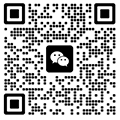

In Chinese grammar de particles are an important topic to learn. The three de particles are 的, 地 and 得 and each has very different uses. In fact, the only similarity is that each is pronounced de. However, they are often grouped together in textbooks and classes, so it's helpful for many students to have a clear summary like the one below.
The first de particle that most people learn is 的. This de is called 白勺的 (báisháo de) in Chinese, as those are the components that make up the character. By number, it's the most common character in Chinese texts.
的 is probably the easiest to understand of the three de particles. It is used to mark possession, and works almost exactly like ‘s (apostrophe + s) in English.
的 comes after the possessor and before the thing that's possessed. Let's have a look at some basic examples:
我的书
my book
你的猫
他的包
We think it's better to learn grammar by using full example sentences, so here are some simple sentences with 的:
这是你的书。
那不是我的问题。
这是中国的产品。
You can see in the examples how 的 goes in between the owner of the item and the item itself. It is almost like the English word “of” but it works in reverse.
It's important to note, though, that Chinese uses possession far more than English. Chinese uses the possessive 的 particle to link qualities to anything, not just objects to their owners. For example:
红色的苹果
漂亮的女孩
他喜欢可爱的动物。
我害怕很大的狗。
Notice how 的 is used to link attributes to things. “Red apple” is literally expressed as “red's apple”, or “the apple of red”. Similarly “pretty girl” is “girl of pretty”, and so on. More advanced learners might be interested in this list of nouns containing 的.
Add:NO.151 Xidazhi Street,Nangang Strict,Harbin,Heilongjiang P.R. China,150001
BINCIA CHINESE COLLEGE

